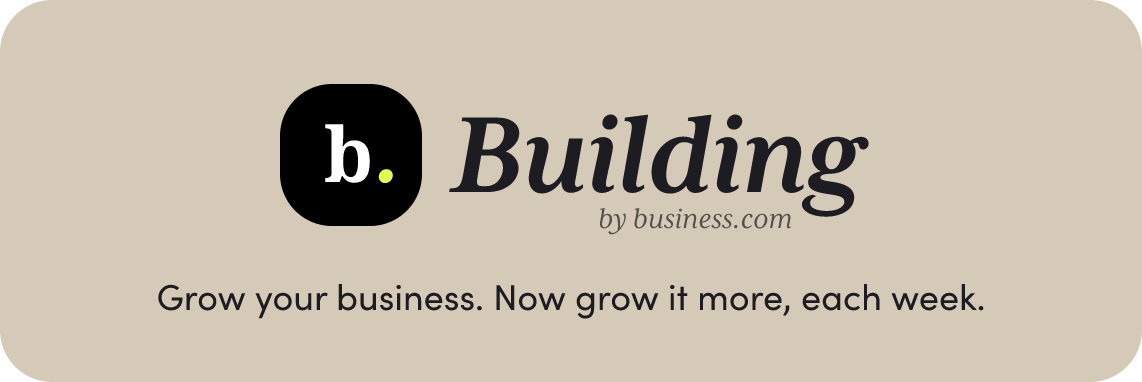Remote work is a hell of a drug – literally, in some cases.
Bosses might not have smelled booze breath over Zoom, but pandemic-era drug and alcohol problems are becoming glaringly obvious as workers return to the office. A survey from the substance abuse treatment center Sierra Tucson previously found that over 20% of U.S. employees admitted to getting high or drunk while working remotely.
The big issue for employers is how to talk to employees about drugs without being, well, a buzzkill. Both employers and employees should know what they can and can’t do. For example, laws around marijuana testing have changed dramatically in recent years. A few states, such as Nevada and New Jersey, have even passed laws protecting recreational marijuana users on the job.
Also, be sure to follow remote work best practices if you want your business to ride high (on profits, we mean.)
|
Subscription dinners: Restaurants are trying a new approach.
Sleep it off: There’s a new way to nap.
Was this email forwarded to you? Sign up here.
|
|
|
Eat Up: Supper Clubs Get 21st Century Makeover
|
Once contained to news and entertainment, subscription services have become a staple of all sorts of businesses today. Even as early adopters like Netflix describe a certain kind of subscription fatigue, new industries are launching subscription packages with success. Among the latest sectors are restaurants, with both large and small establishments increasingly giving subscriptions a shot.
For small restaurants, supper clubs are a chance to get personal
Almost two years ago, El Lopo, a Spanish tapas outpost in San Francisco, rolled out its first subscription offering. According to owner Daniel Azarkman, the tide was turning in March 2021 when he was approached by The Third Place, an online platform that helps local restaurants use subscriptions to strengthen customer relationships. The encounter would prompt Azarkman to create El Lopo’s take-care-of-me club.
There was less on-site dining then, and most subscription ideas were about home kits or wine clubs, which were all popular at the height of COVID. But Azarkman was focused on returning to on-site dining and wanted to harmonize the subscription concept with getting people back through his doors. Framing the offering as a supper club that gives members a house credit felt like the right balance. “It kind of doubled as a loyalty program and a way to just have some more predictable revenue,” he recalls.
Today, El Lopo’s club has about 27 members and Azarkman estimates roughly 15 members visit more than once a week. The club is geared toward local patrons and regulars; for $89 per month, each member receives a $100 credit. The size allows Azarkman to personalize meals — there are no menus, no bills; they simply bring members food they know they’ll like.
Large restaurants experiment with subscriptions at scale
On the opposite end of the spectrum is Asian fusion chain P.F Chang’s. Over email, Genaro Perez, SVP of marketing, shared the company’s journey with subscriptions. Launched in September 2022, the restaurant’s Platinum Rewards program was among the first of its kind in the polished-casual dining category. Mr. Perez said it’s part of their omnichannel approach, allowing guests to interact with the restaurant when, where, and how they want.
For $6.99 per month, members enjoy unlimited free delivery and priority reservations, while earning 20 points for every $1 spent. Like El Lopo, Perez relays that subscriptions are increasing dining and spending. “About 30 percent of all subscribers are ranked in the top percentile for frequency and spending,” he reports. When dining in, subscribers spend 18 percent more than nonmembers.
|
|
|
Each restaurant sees a preference for service-based benefits
Just as both restaurants see higher engagement from subscribers, they also see a desire for more service-based benefits, rather than just item-based rewards, like a free appetizer or dessert. As an example, Perez cites the concierge service that comes with Platinum Rewards, in which members get priority attention from the guest services team. This may be one way of scaling what Alvarez sees as the biggest draw of El Lopo’s supper club. As he puts it, “A lot of the appeal of the program is our members feeling like they’re special — our staff knowing their names, what they want when they come in.”
|
|
|
Accurate and Fast Payroll Is a Must-Have for Employee Retention
|
You can be sloppy at work if the BBQ food truck is parked outside your office for lunchtime, or if it rains during a company hiking trip — but you can never be sloppy when it comes to payroll.
That’s because 1 in 6 employees say they would quit their job after a single inaccurate paycheck, and nearly 25% have received one, according to an Intuit survey. What’s more, employees at small businesses report they’re 14% less likely to always be paid on time. Payroll mistakes destroy morale and retention, and that’s before the potential tax penalties.
With QuickBooks Payroll, business owners can confidently make fast unlimited payroll runs and get automatic tax calculations on every paycheck in all 50 states. Employees can even access pay stubs and W-2s, and safely view PTO balances and withholding allowances online.
QuickBooks Payroll delivers big business benefits on a small business budget, and 24/7 callback support means you’ll get answers anytime — even if you’re standing in line for that BBQ food truck. Save 50% for three months when you buy now.
|
|
|
Fear of Commitment: Why It’s Holding Your Business Back
|
The C-Note series is presented with our partners at Silver Lining, offering tips on what it takes to launch, run and grow a successful business.
Commitment is the first and most important action successful small business owners make, and it can also be the most difficult. That’s because commitment is, in many ways, rejecting idealism. Just look at the declining marriage rates, voter apathy, and frequent career changes that define our generation, and you’ll see a battle between the fairy tale we think we want and the real life we actually have.
Just like in every other area of life, building a successful small business comes with inevitable challenges, and owners who lack commitment will struggle to press through those setbacks. Choosing commitment means choosing to sit in the driver’s seat of your business instead of becoming an unwilling passenger. Here’s how you can make that choice solid:
Commitment = “I want” + “I deserve” + “I will”
Refusing to commit to your business is usually a symptom of a larger issue — feeling unworthy of success. Small business owners are incredibly diverse in backgrounds, experiences, and paths of entry into entrepreneurship. The traditional credentials and pedigree often found in the professional world may not be something they possess, fueling feelings of inadequacy and imposter syndrome that don’t match their incredible creativity and work ethic. Instead of allowing insecurities to impact your commitment, encourage yourself. Read stories of success that mirror your experiences, listen to podcasts about building your self-esteem, and speak affirmations daily to remind yourself that you are deserving of success.
It is critical to remember that a commitment to success is not a commitment to perfection. There’s no such thing as perfect, and making mistakes is crucial to positive professional growth. When you commit to your business’s success, be sure to include a promise to reject perfectionism and embrace the ups and downs of the journey ahead with grace and self-love.
|
Take a Load Off? There’s a New Way to Nap That Doesn’t Involve Lying Down
|
In 2022, the American Psychological Association reported that 36% of workers across the board suffered from cognitive weariness, 32% from emotional exhaustion and 44% from physical fatigue. We’d be ready to count the 79% who report work-related stress as a given, but Itoki Corporation says it doesn’t have to be this way.
Enter the nap box, a collab between the office furniture company and the lumberers at Koyoju Gohan. The four-legged contraption serves as a personal nap pod, a space-age cocoon that supports your head, knees and butt before you close the door on yourself, and welcome sweet, sensory-isolated shut-eye.
Call it wacky, but is it really any crazier than the on-campus napping spaces companies like Samsung and Meta have been offering for years? Cumulative research shows solutions that hit at the root cause of work exhaustion — that is, overwork itself — are more effective than treating the aftermath. But in the meantime, we’ll take that nap, please.
Find out why you should let your employees nap on the job.
|
|
|
Written by Elizabeth Barton, Dan Ketchum and Silver Lining
|
|
|
|








